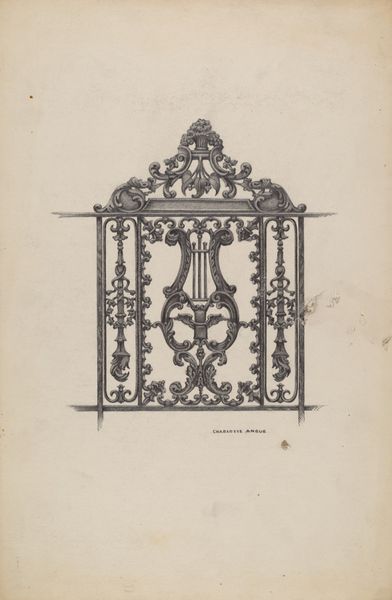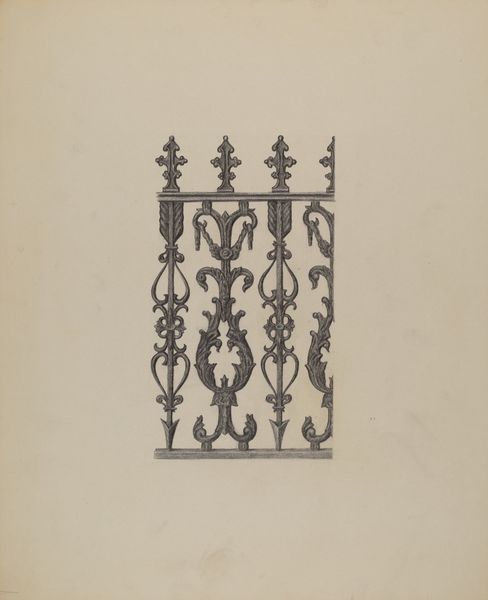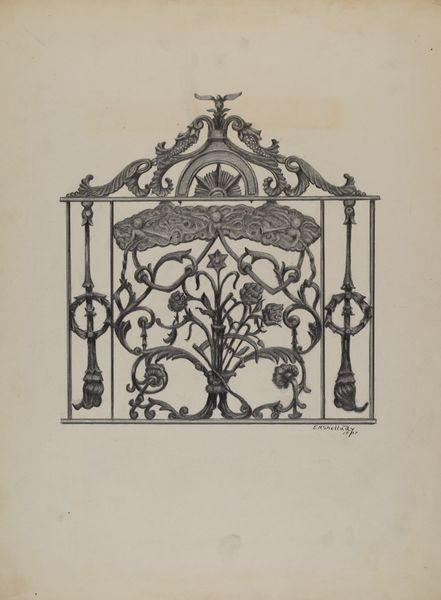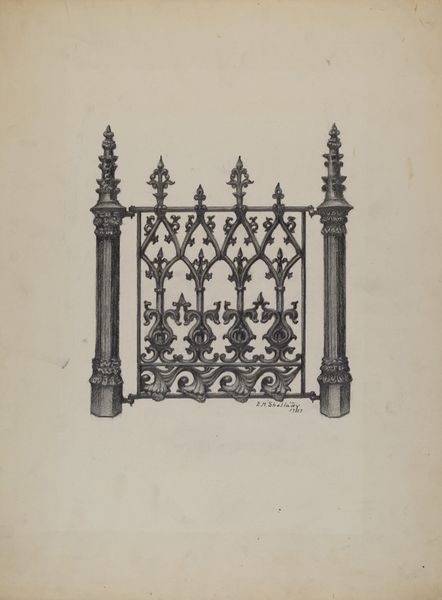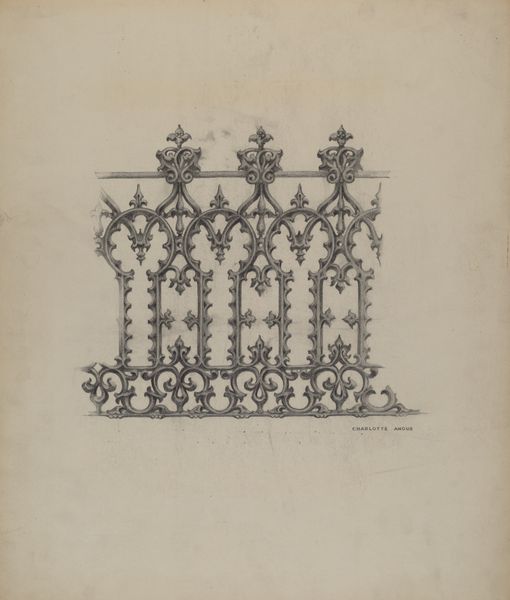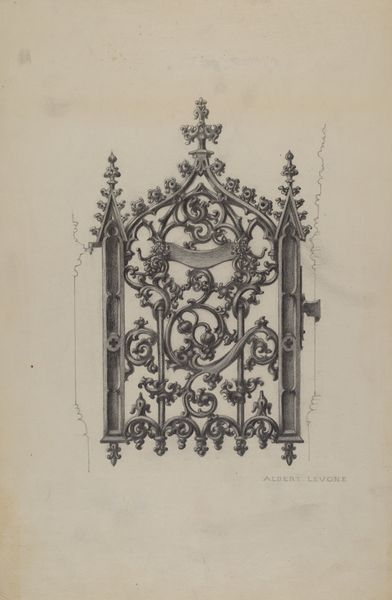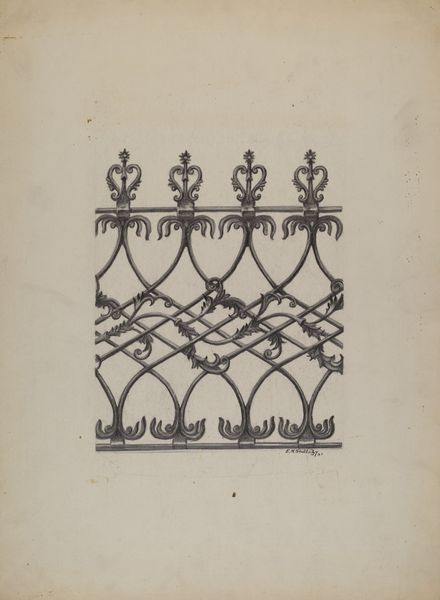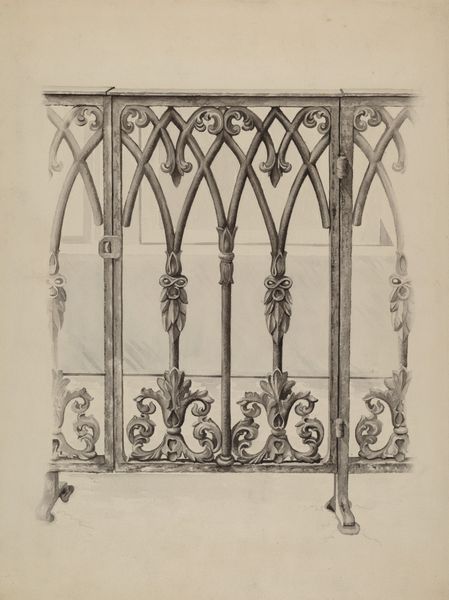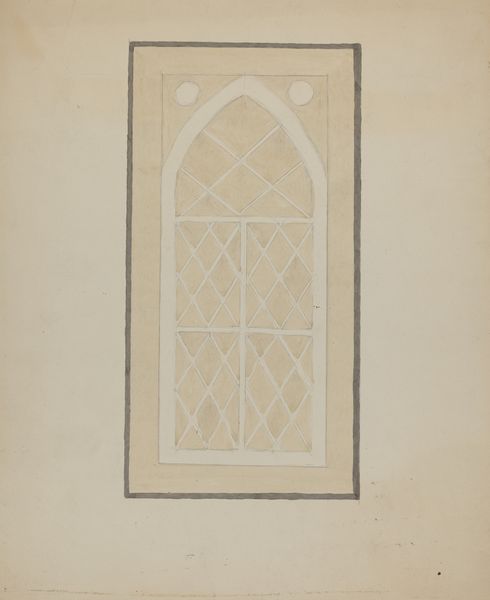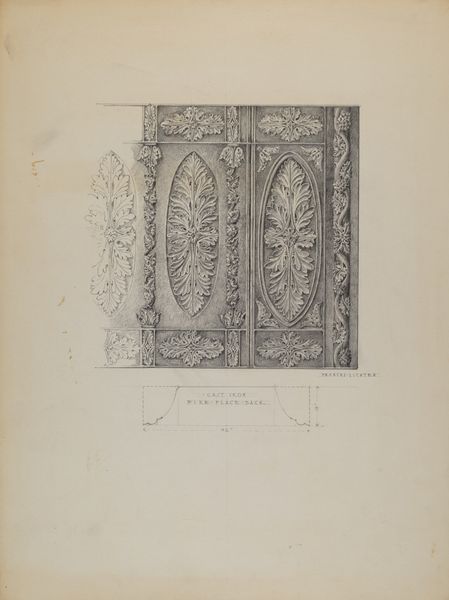
drawing, paper, pen
#
drawing
#
paper
#
form
#
geometric
#
line
#
pen
Dimensions: overall: 50.6 x 38.4 cm (19 15/16 x 15 1/8 in.)
Copyright: National Gallery of Art: CC0 1.0
Curator: Eugene Shellady’s 1937 drawing, simply titled "Gate", meticulously renders an ornate barrier using pen on paper. Editor: My immediate impression is one of constrained elegance, Curator. There's a tension between the flowing, almost whimsical details and the overall sense of containment. It reminds me of something from Piranesi’s imaginary prisons. Curator: I can appreciate that reading. Structurally, the repetitive verticality and centralized symmetry evoke formality. However, the curvature of the ironwork, its rhythmic articulation into near-organic forms, speaks to an earlier visual lexicon – almost baroque in its opulence, wouldn't you agree? Editor: Quite. Looking at this ‘Gate,’ particularly during the late 1930s, when architectural ironwork became more streamlined, one can almost feel an era of artisanal craft and localized foundries slipping into the past, supplanted by standardized, mass-produced metalwork. It serves almost as an elegy to the end of hand-made elegance, given the oncoming War, when materials were directed towards other types of gates – border controls and military defense. Curator: A potent interpretation indeed. The artist seems to be focused, quite obsessively, on form—reproducing intricate details with precise line work. Shellady appears less interested in historical contextualization or metaphorical implications and rather consumed by pure geometrical exploration. Editor: I disagree slightly, though I can respect your reading from the object itself. I believe, intentionally or not, that art produced at any given moment will always become intrinsically linked with history, be that historical memory or impending historical fact. Can the social unrest of Europe at the time not be felt in this restrictive depiction? Curator: Perhaps. But by foregrounding the inherent visual elements, its symmetrical balance, line, and delicate forms, "Gate" offers viewers access to a meditative realm apart from temporal and political constraints. Editor: While your formal assessment resonates with my structural observations, I continue to interpret this beautiful cage as a melancholy marker from our history. An era where aesthetics may have, tragically, failed. Curator: Well, irrespective of historical determinism versus formal freedom, it appears both our subjective positions lead to rich critical engagement with "Gate" – quite literally opening access for interpretation.
Comments
No comments
Be the first to comment and join the conversation on the ultimate creative platform.
